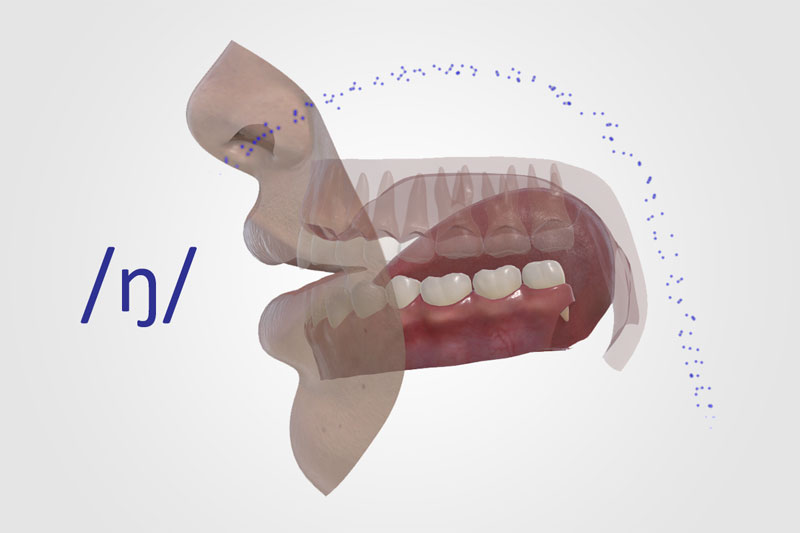English vowel sounds
Vowels are open sounds because they involve no obstruction to the flow of air from the lungs as it passes up through the windpipe (trachea), through the voice box (larynx) and out of the mouth. Other than positioning the tongue, jaws and lips there is nothing to obstruct the airflow. All vowels are produced with the vocal folds vibrating and are said to be voiced sounds.
Vowels are commonly described according to the following characteristics:
- The portion of the tongue that is involved in the articulation: front, central or back.
- The tongue's position relative to the palate: high, mid or low.
- The shape of the lips: rounded or unrounded (spread).
- The length or duration of vocalization: long or short.
A four-sided vowel chart is often used to demonstrate the front–back and high–low positions. The chart roughly represents the tongue position in the oral cavity.

The vowels used in Pronunciation Coach 3D for American English are described in the following table. Click on the video links to watch a short 3D animation of how each vowel is produced.
Pronunciation Coach 3D
Pronunciation Coach 3D uses state-of-the-art computer animation and 3D modelling techniques to illustrate how to pronounce all of the sounds in the English language, and how to combine these sounds to pronounce any word or sentence.
Read more...
Diphthongs
A diphthong is a long, complex vowel which starts with the sound quality of one vowel and ends with the sound quality of another one. Although they are classified as single phonemes, diphthongs are given a double symbol to show both the quality they start with and the quality they end with.